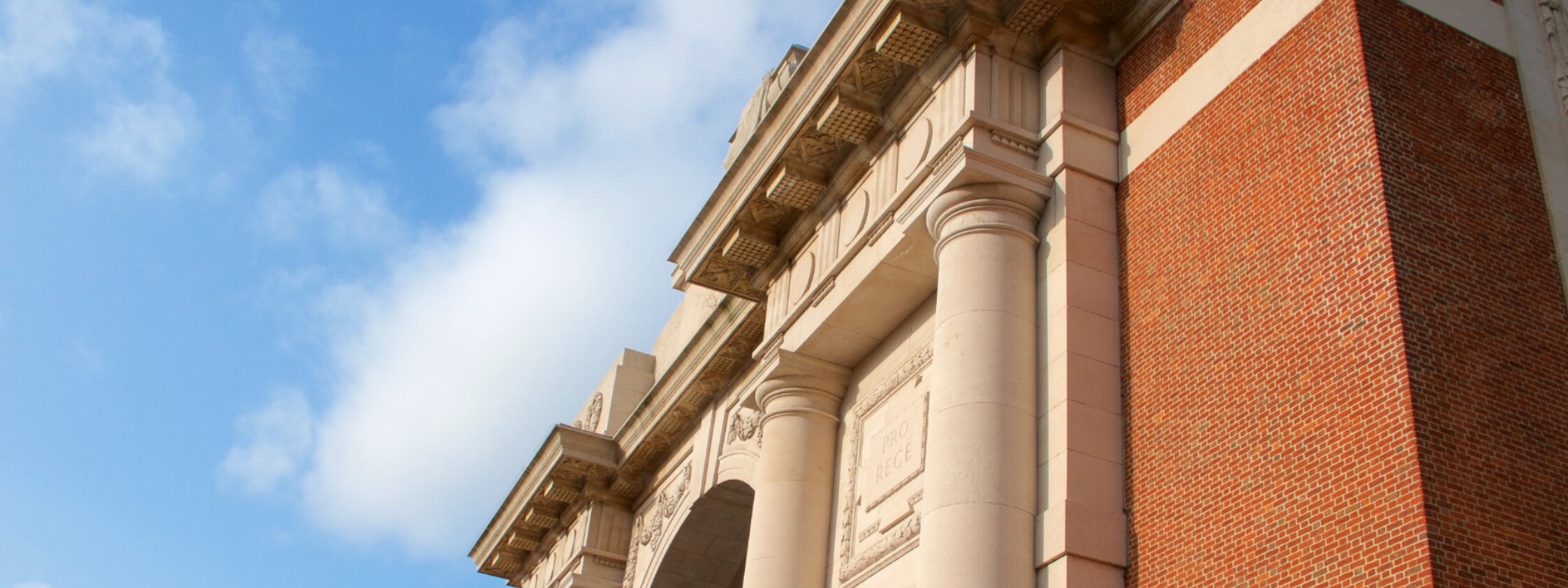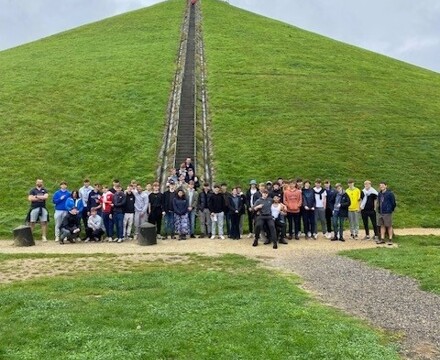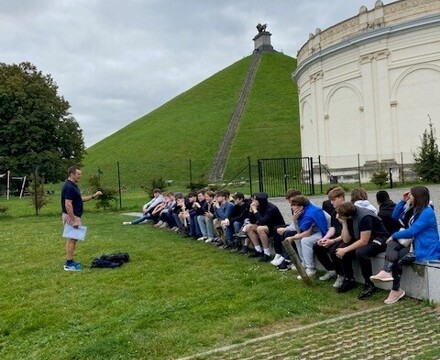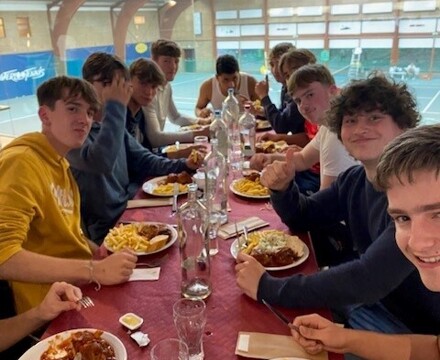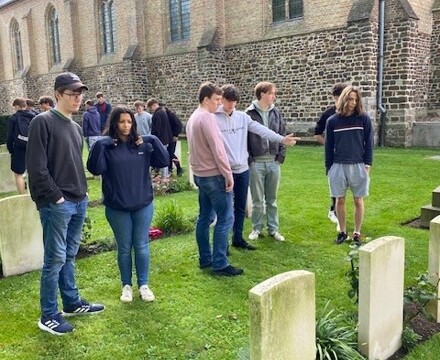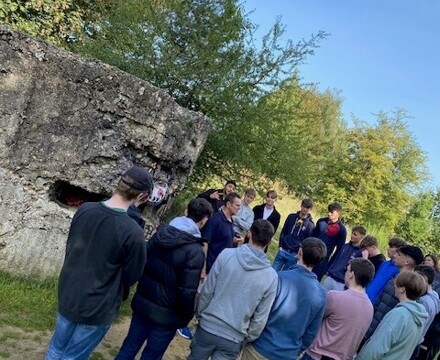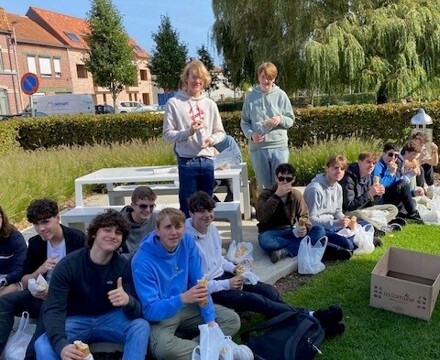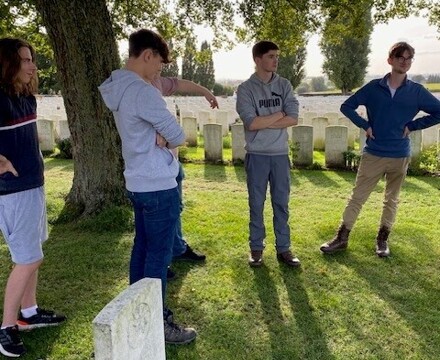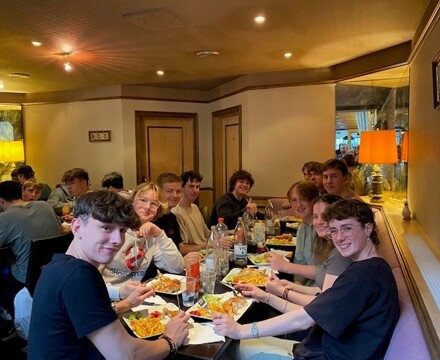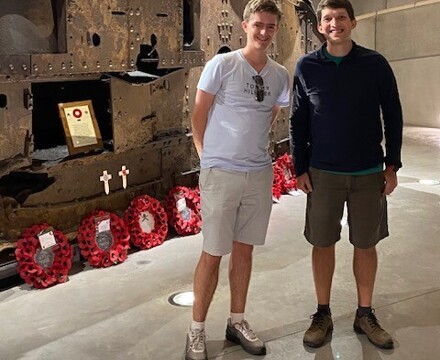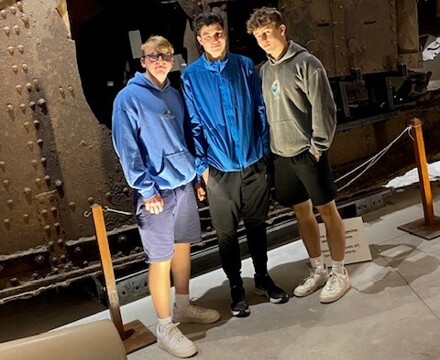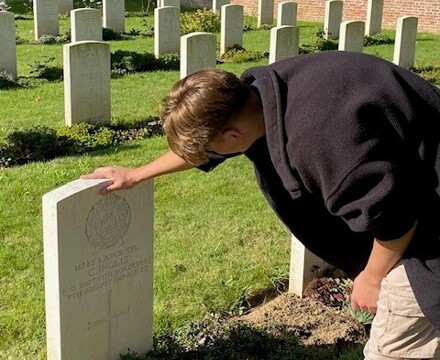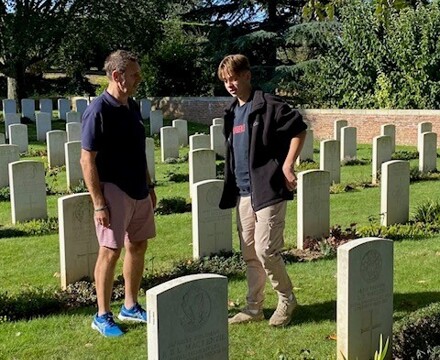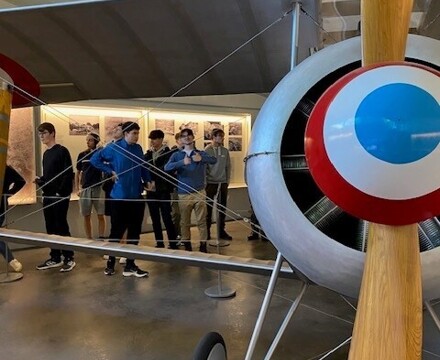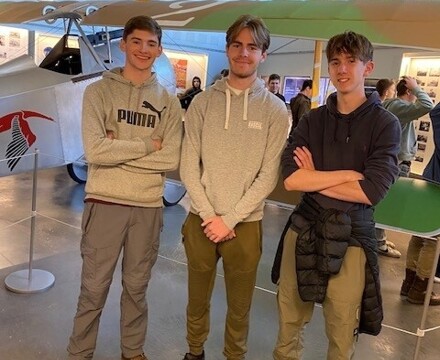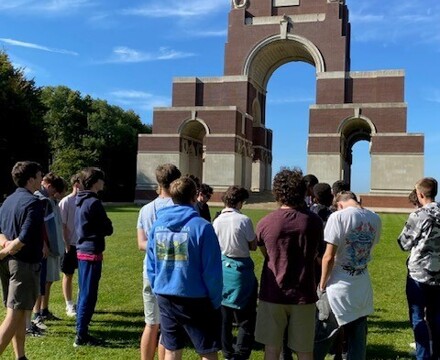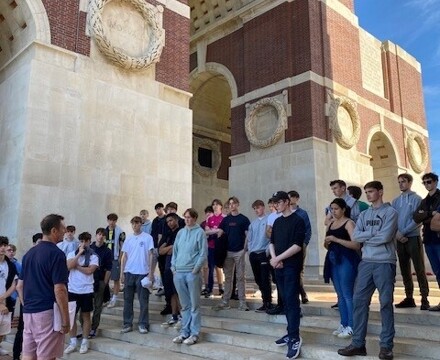- Home
- News and Dates
- Latest News
- Study of Warfare History Trip, October 2...
Study of Warfare History Trip, October 23
BackA write up by Noah W (Year 13):
On the Friday morning of the trip, we hit the road before the sun managed to glimpse over the horizon. By the time it began to peak its way through the clouded day, we were in Belgium, far from home and sufficiently rested.
Firstly we attended a memorial museum of the Battle of Waterloo in 1815. The museum is impressive and contains an interactive tour and 4D video which captures the battle as it would have happened.
The museum is adjacent to a a panorama, 360 degrees painting of the battle, rendered in amazing detail. A quick trip up the Lion’s Mound allowed us both a breath of cool air, and a look over the flat Belgium landscape which rolls on and on and on. We took a walk around the battlefield and had a look at Hougoumont Farm, the British stronghold of the battle. The importance of Hougoumont is impressed on to us, it was a deciding factor to the battle and the British troops defending it, fought tooth and claw to defend it. We returned to the coach and made our way to the town of Waterloo, where Wellington’s base was during the Battle.
The second day we fast forward 100 years to look at the Western Front of World War One. The day is full of the sobering thoughts and once war-torn fields which now seem rather peaceful, excluding the shrapnel the guide finds and shows us. Shrapnel between cabbages is probably good for giving it an iron-like taste, but I think I prefer it without, if at all.
One of the main events of the day is a visit to Tyne Cot, the largest commonwealth memorial in Belgium. Headstones run out in long rows, white and polishes, their upkeep is a priority not to be dismissed. As much as the entire trip had a solemn air to parts of it, Tyne Cot was a distinct reminder of the cost wrought in WW1. The day ends with the Last Post at the Menin Gate in Ypres. Ypres has done the ceremony for nearly 100 years now, and the city falls quiet as the music plays out.
On day three, we went to a tank museum in Cambrai. The hollow shell of the tank stands in the middle of the room and despite its wrecked state it strikes an impressive figure. The tank is named Deborah, for those interested. We hit the road, one final time and make our way home, stopping only to lay wreaths at a relative of a student’s headstone. It was kindly moment, organised by the teachers and guides. We cross border control, any possible difficulties being smoothed over with patience and understanding. And as soon as it can be thought we are back in England. The coach parks and our parents pick us up, as we travel off to bed, in search for a good night sleep.
